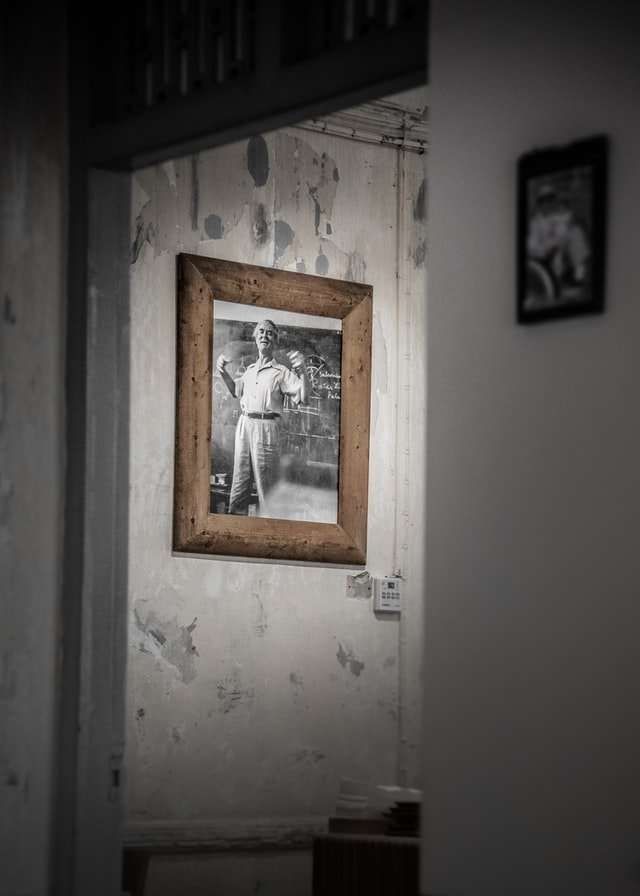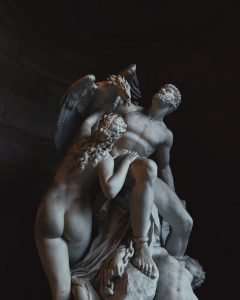The rise of graphic design as a field, a career, and an art form is really one of the most amazing stories in modern history. But most people have no idea how it happened or how it got to be where it is today.
Though we are surrounded by the results of design all day every day, we still don’t really understand what design is and why it matters. Design is not just about making things pretty. It’s about communication and persuasion. It’s about selling things and shaping public opinion and making money. And because of that, design has always been controversial. For thousands of years, there were basically two kinds of graphic design: official art and commercial art. Official art was used by governments and churches to inspire loyalty and patriotism. Commercial art was used by merchants to sell products.
But starting around the 1500s in Europe there was a third kind of graphic design: political cartoons. Political cartoons use images to convey ideas that words aren’t good enough for — like satire or parody — or new political ideas that hadn’t been expressed before, like democracy or human rights or communism or fascism.
As designers, we are respectful of the past and of tradition, but we are also advocates for change. We believe that design has an important role to play in helping us navigate the unsteady waters of technological advancement and social upheaval.
We put forward this blog as a place where ideas can be explored, expanded upon, critiqued and debated. We hope to inject new perspectives into our collective understanding of design and its place within our culture here in the 21st century.
Design is at the core of all human activity. I have been an artist, designer and architect for most of my life, but I have never studied art history.
In the past 30 years design has become a major global industry. We now use design to communicate every aspect of life; from medicine, education and science to video games, music and film. Design elements are everywhere as corporations have used their power and influence to gain control over commercial culture and define our daily lives.
You have only to look at the proliferation of products with common visual characteristics: Starbucks’ logo, Nike’s swoosh, Ikea’s flat-pack furniture and Apple’s product packaging are all examples of the success of corporate branding. Corporate identity has become the dominant visual language of contemporary culture. It is a language that is inescapable because it is embedded into everything we see or touch: clothes, transport, food and household goods are all branded. In this way brands create homogeneity in our society by appearing on an endless variety of products in almost every aspect of our lives.
This blog will take you on a journey through time as we explore how design has evolved into its current role as a powerful tool for mass communication and social control.**
This is a blog I’ve been working on for a couple of years now. It has been a fantastic learning experience and I’m really proud of it. I have tried to make the blog as accessible as possible, and I think it’s pretty readable/watchable without any prior knowledge of graphic design or design history. There are some more personal posts in there too, but those are not really the focus.
I hope you enjoy the blog, and if you do, please subscribe!
Design is an art. It can be taught, but those who do not have the gift will never be able to master it. Design is a fine art, and as such it requires study and practice if one wishes to create truly magnificent designs.
So why do we see so many design disasters in the world? The short answer is poor education. Many young students of design are not given a proper foundation in the basics of design and thus do not understand the importance of good composition. The end result is a generation of designers that produce rather lackluster work.
But what exactly does make for good design? That depends upon the medium in which you are designing. For example, you would use different methods when designing for textile printing as opposed to web design. Each medium has its own set of rules that must be followed in order for your piece to be considered well designed. The best way to learn these rules is through practice and study. The more time you spend analyzing the works of other designers, the better your work will become.
I highly recommend exploring some of the links on this page and others like it if you are interested in learning more about design techniques. As with any skill, you must constantly strive to improve yourself or else you will never be as good as you could
Graphic Design is the communication of visual ideas through the use of typography, photography, illustration, and page layout. It is the art of visual communication. Components of graphic design vary from stylized images of people, places, and things to three-dimensional renderings and animations. Graphic design uses many different elements in order to effectively convey a message.
Dating as far back as the cave paintings of our ancestors, graphic design is not a recent phenomenon. In fact, it has been used for centuries to communicate messages about politics, religion, science, and commerce. Understanding the different types of graphic design will enable you to recognize their presence in everyday life.
Tone:informative
From an article on the subject:
“In 2008, the Deutscher Werkbund (Association of German Designers) issued a statement claiming that “design is a language of visual expression, which has been developed to fulfil certain communicative tasks and is based on social conventions”. In this context, pure design without function is seen as “decoration”, thus, the term is used to describe applied arts and crafts that hold both artistic and practical value.
However, in common usage, ‘design’ describes the intended result of a process involving many different professions.
The European Center for Design (ECFD) defines design as follows:
“Design—the intentional creation of a plan or convention for the construction of an object or a system or for the solution of a problem.”


